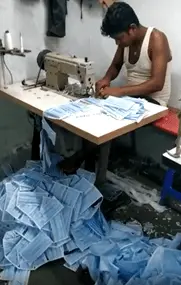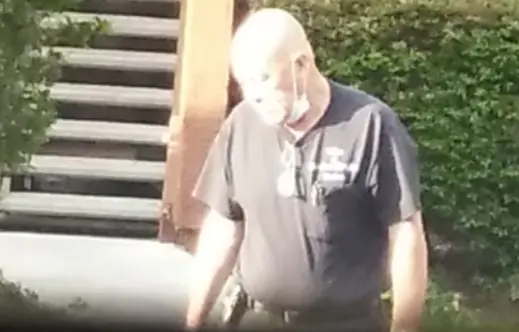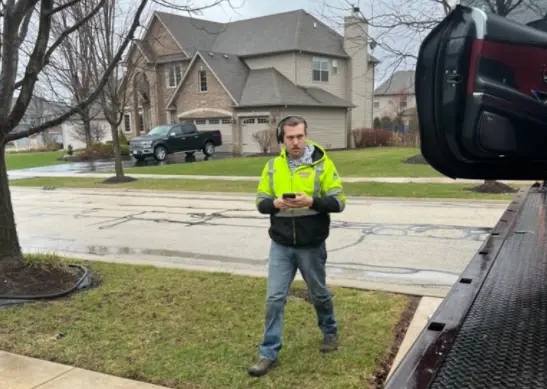Complaint Review: The Brohn Group, LTD - Austin Texas
- The Brohn Group, LTD 8140 NORTH MOPAC EXPY BLDG 4 SUITE 270 Austin, Texas United States of America
- Phone:
- Web: www.brohnhomes.com
- Category: Builders & Contractors
The Brohn Group, LTD ADAM BOENIG Construction Defects Austin, Texas
*General Comment: Eagle Inspection has been erroneously cited as the author of this FALSE report
*Author of original report: CORRECTION: INCORRECT REPORTING ENTITY
listed on other sites?
Those sites steal
Ripoff Report's
content.
We can get those
removed for you!
Find out more here.
Ripoff Report
willing to make a
commitment to
customer satisfaction
Click here now..
Recently I inspected a home with a great deal on construction defects. Below is the 3rd party report.
HVAC -The current setup of the HVAC system does not deliver adequate airflow to the home. Both condensers keep running because they are unable to reach the set temperature resulting in very high utility bills and eventually a shortened life on the HVAC equipment.
Master Bedroom Vanity Light Switch - The switch at the vanity which is supposed to control the vanity light controls the Jacuzzi. The electrical plan provided to the homeowner at closing indicates the switch for the Jacuzzi should be located on the opposite wall.
Insulation Settling/Compressed/Missing Insulation - The insulation in the attic has become compressed and is no longer performing properly. There are areas in the home where there is no insulation.
Driveway Approach/Driveway Cracking/Driveway Warranty Breach - The pitch on the driveway is too high and scratches the undercarriage of small vehicles. A 10 x 10 section of the driveway that was patched by Wolff Concrete in August 2009 has cracked a second time.
Sewer Gas Odor from Master Bedroom Shower - The drain is not properly installed and several plumbing penetrations need to be sealed.
Ceiling Rattling - The upstairs ceiling rattles because the plywood board under the furnace is not thick enough.
Grout in Elevator Cab - The grout in the elevator cab is chunking away.
Paint Sheen - The paint sheen on the walls where the thermostat was removed and where the elevator was installed does not match the entire wall.
Garage Door Wire Exposed - Electrical wires are exposed and wire caps were not used on the electrical wiring of the garage door posing an electrical hazard to the homeowner and his family.
Sheetrock Buckling at Staircase - The sheetrock is buckling at the staircase.
Stone Columns - Mortar is chunking apart and the stone columns are shaking.
Master Bedroom Carpet - The carpet in the master bedroom near the fireplace is loose and needs to be re-secured.
Sprinkler System - The sprinkler system does not cover the entire yard and also sprays into the neighbors lot. In addition, the sprinkler system was not wired properly. The sprinkler system electronic wires that control the valves were not placed in a conduit.
Wall Texture - The wall texture on the back wall in the study/exercise room does not match the rest of the room. The wall has a light orange peel texture while the rest of the room has a hand trowel finish.
Roof---Mortar and concrete on Roof. Damaged shingles need to be replaced.
Cabinet Drawer in Utility Room - The cabinet drawer for the desk in the utility room is warped.
Cabinet Drawer in Kitchen - The cabinet drawer in the kitchen is very hard to open and has splintered in several places.
Exterior Wood Trim and Soffits - The stain used to stain the exterior beams, wood trim, soffits and garage door trim were an interior grade stain and not an exterior grade stain. The stain has deteriorated significantly and is damaging the wood.
Travertine Tiles - The tiles in the kitchen that were replaced by High Tech Flooring in April of 2009 have now cracked again.
Tile Threshold at Elevator The travertine tile threshold that was installed in April of 2009 has started to break apart.
Elevator Door The elevator door is hard to open because the child security device wont release the door. The thickness of the door needs to be increased to properly release the door. The present doors were designed to serve as closet doors and are not rated to serve as doors for an elevator.
Loose Subfloor Boards There are loose subfloor boards in the Master Bedroom, Game Room, Bedroom 4, Media Room and Study. The bathroom tiles near the Game Room also have a crunching sound when walking on the tiles.
Courtyard Drainage The courtyard was formed with two retaining walls and does not have proper drainage during heavy rains. The PVC pipes in the retaining wall are not large enough and water ponds.
Water Penetration Issue between Game Room Patio and Entry Tower There is an approximate five inch gap between the stucco wall of the game room patio and the entry tower and it is causing water penetration in the front entry. This area has no drainage and was designed to be a covered patio.
Baseboards in Garage There are gaps between the concrete and the baseboard, which allow pests, debris, and heat gain into the home
Wood Floor Creaking The floor creaks when walking on it. The subfloor under the planks needs to be secured.
Stucco Stress Crack at Entry Tower There is a 1/8 stucco crack at the entry tower. This is potentially due to the excess water penetration from the five-inch gap between the entry tower and the game room patio.
Stucco Surface Texture Imperfections Previous stucco repair at the rear of the home does not match the rest of the wall.
Utility Pole Code Compliance Issue The Brohn Group, LTDdid not install the utility pole to code. The code states that all structures/pools must maintain a 10 clearance from all energized power lines. Currently the pool is 7 away from the pole. Architectural Plan provided to homeowner shows that underground service is required and a conversion would need to be done to meet City of Austin code.
Misrepresentation of Insulation Standards in the Home Builder Misrepresented insulation standards
- There is little to no insulation in the elevator shaft.
There are gaps in the elevator shaft allowing heat from the attic to penetrate.
There is a tremendous amount of heat gain from the attic to the shaft.
There is no insulation in several walls in the Master Bedroom.
There is no insulation under the stairs leading to the Master Bedroom.
There is heat gain from the hydrotherapy (Jacuzzi) tub access panel.
There is little to no insulation in the Media Room ceiling.
There is no insulation in the closet in the study/exercise room.
The insulation is missing in several places in the Master Bedroom ceiling.
The Game Room lacks enough insulation and is missing insulation in several areas in the ceiling.
There is excessive heat gain from both attic entry points.
There is excessive heat gain from the windows.
3RD PARTY TESTING AND ANALYSIS
All testing protocols were performed to accepted industry based standards. The home was tested to determine the following:
- The
nature and extent of the zones covered by each unit and by the dual zones
of the upstairs unit - Total
External Static Pressure of each unit in all possible configurations of
the zone dampers - Airflow
measurements at the return grilles and supply grilles using an AccuBalance
digital airflow capture hood to test for adequate airflow through each
unit as per manufacturers specifications - Temperature
differential (Delta T, ?T)
of each unit in all configurations to determine if each unit is in fact
producing the full BTU cooling capacity at which it is rated - Supply
air temperature in the problematic rooms - An
Infrared camera scan of the walls, floors and ceilings of the home to
ascertain the condition of the insulation, locate areas where heat flow
into the home are excessive and where the air barrier of the home is
lacking or ineffective - A
Blower Door depressurization test at negative 50 Pascals (-0.20 wc)
pressure as per ASTM (American Standards for Testing and Measurement) standards
to measure overall home air tightness and locate points of air
infiltration - Manually
inspect for and locate air leakage in the HVAC ducts - Reviewed
the ACCA (Air Conditioning Contractors of America) Manual J, Heat Gain/Heat
Loss Calculation performed by AMC Engineering for the master bedroom/hall
which by code is used to determine the sizing in BTUs (British Thermal
Units) of cooling and heating capacity of equipment installed in
residential structures - Inspect
the general construction of the home to ascertain any framing or design
errors that are contributory to the issues being experienced at the home
Results and Determinations:
Upstairs A/C-
- Airflow
Correct airflow through an air conditioner is absolutely critical to its
ability to produce the full cooling capacity at which it is rated, to do
this efficiently and to avoid other negative impacts. Correct airflow in air
conditioners has often been compared to an adequate flow of blood to the
heart. - The
five ton system cooling the upstairs is designed to have airflow of 2,000
CFM (cubic feet per minute) at the industry standard design rate of 400
CFM/ton of cooling capacity.
This unit was measured with both zones on at a total airflow of
1,437 CFM, which is 563 CFM (28%) short and is only 287 CFM per ton of
capacity. - Static
pressure is representative of the total resistance to airflow through an
air conditioning duct system and has often been compared to the blood
pressure of the air conditioner.
The design total external static pressure for air conditioners is
normally 0.50 wc (water column) and in this unit it was measured at the
flowing levels in the zone configurations noted: - Both
Zones On 0.81
wc at 19F - Z-1
MBR only 1.05
wc at 24F - Z-2
MBR off/rest On 0.89
wc at 20F - The
normal performance of an air conditioner is to produce a temperature
reduction between the house air returning to the unit and the air leaving
the cooling (evaporator) coil of between 17F and 20F. When the coil produces less than
this or more than the expected temperature drop or Delta T it is often an
indication of a problem. For
one thing, when the airflow through a unit is restricted the delta T goes
up. The above delta Ts show
that when only the MBR zone is calling for cooling and the rest of the
floor is satisfied, the temperature drop becomes quite high. This is related to the increased
static pressure we see in this configuration and both are indications of a
very reduced airflow through the unit. Reduced airflow obviously means reduced cooling
capacity. This could also lead
to a condition called icing the evaporator coil. When this happens the evaporator
coil in the unit in the attic can become partially or completely covered
in ice and air can no longer flow through the fins of the coil to be
properly cooled. Cooling
output drops off dramatically. - One
item to note in evaluating these readings is the fact that the day we were
there the original filters (one inch thick pleated media filters) had been
replaced by one inch thick fiberglass filters. The media filters have between two and two and one half
times the static pressure drop (resistance to airflow 0.10 0.20+) as
do the fiberglass filters. When
the return grilles and the return ducts are adequately sized this is
normally not enough increase to cause a problem. The presence of the more resistant media filters would
have further increased the already excessive total static pressure, reduced
further the measured airflow through the units. This would have reduced total cooling output and
increased the likelihood of icing the evaporator coil. Coils usually become iced late in
the day after many hours of continuous run time in extreme heat conditions. - During
the peak of the summer delta T readings were taken by Stephanie Grahn late
in the afternoon (about 6pm) of a 105F day. The one
inch pleated media filters were still in place at the time so we can
postulate that the airflow through the units was even lower than the
anemic readings we found with the fiberglass filters in place. The delta T readings were as low
as 4F in the game room
and 5F in the MBR. Measuring delta Ts this low is a
strong indication of an iced evaporator coil and would certainly lead to
the inability of the system to cool the space adequately. - The
location of the thermostat for the MBR is questionable as it is directly
across from a series of west facing windows where it is unquestionably affected
by the hot sun in the afternoon.
This would lead to false readings of the temperature in the space
and a constant call for cooling in the zone during the afternoon.
Downstairs A/C-
- Airflow-
The airflow for this four ton unit should be 1,600 CFM and it was measured
at 995 CFM which is 605 CFM (39%) short. This is only 248 CFM per ton of
capacity which is far below the 400 CFM required for correct and efficient
operation. - Static
pressure was measured at 0.68 wc. - The
delta T across the evaporator coil was 24F. This
elevated Delta T is most likely caused by the low airflow across the
evaporator coil. When we move
too little warm air across a cooling coil the air becomes colder than we
expect. Move more air across
the coil and we get more total BTUs of cooling capacity delivered to the
rooms. Again this unit could
be experiencing icing of the coil on days with long run times. - The
largest problem this unit has with airflow is related to the sizing of the
return ducts and the lengths of the runs required. Due to issues related to the
design and framing of the house the HVAC contractor was forced to resort
to a number of small ducts to reach the downstairs returns. The outcome of having to do this
is low return airflow.
Blower Door Air Infiltration Testing:
- The
Blower Door places every surface in the home under a controlled and
specified pressure differential and then accurately measures the air
infiltration in CFMs. We can convert the CFM rate to the number of air
changes per hour under normal (ACHn) wind and temperature conditions that
the home experiences using accepted ASTM formulas. - The
target air infiltration for homes today is 0.35 ACHn or about one third of
all the interior air being replaced by fresh outside air every hour
resulting in a complete turnover every three hours. - This
home was measured at 0.55 ACHn which is 1.57 times the target air
tightness level. This is not
really excessive but it does contribute to increasing the overall cooling
load of the home. - Sometimes
it is not just the overall air infiltration rate but other problems that
are revealed by the blower door test. Many builders do not correctly air seal the perimeter
rim joist or band joist at the exterior of the framing for the second
story floor. The framers
often do not extend the exterior sheathing fully behind the point where
the porches and porch roofs are connected to the exterior wall or they
leave big openings here and do not air seal them. This error allows hot and humid
outside air to freely circulate through the open web trusses between the
uninsulated floors of the home.
While this does not always lead directly to the entry of outside
air into the home, it does turn thousands of square feet of uninsulated
interior surfaces into boundaries between the inside and the outside
air. - While
inspecting the home with the Infrared Camera during the Blower Door test clear
evidence of just this framing error was seen. One illustrative example was the fact that the wall of
the bedroom adjoining the hall leading to the MBR showed significant heat
flow at the point where the open web trusses supporting the hallway were
on the other side of the wall and the wall was cool and dark above that
point in the wall. Another
area in question is the MB bathroom tub. During the Blower Door test there was very significant
heat and air flow discovered coming up from the floor area under the
tub. So much air was coming
from under the tub that the service access door was forced open. Destructive investigation at the
ceilings of the porches would be necessary to confirm the presence of
these hidden openings. - The
trey ceilings of the master bathroom, the media room and the game room
all showed large amounts of air infiltration from the attic. Further inspection found that
there is a gap about one inch wide completely around the trey ceiling
where the sheetrock does not meet allowing the super heated attic air to
freely enter the rooms. - The
trey ceiling in the game room above the outside doors is very poorly
insulated and has some areas where the insulation is totally missing. - There
were large patches of the ceilings of the game room and the master
bedroom where no attic insulation had been installed at all. - The
kneewall of the master bedroom has missing insulation and has no air
barrier on the back side to prevent hot convection loops from reducing
the effectiveness of the installed insulation to less than that of the
wood framing members. - The
chase next to the bed in the MBR is open to large amounts of air
infiltration from the attic where the nightstand is framed into the
wall. - There
is a large gap around the exterior door from the MBR to the balcony. - In
general the vaulted ceiling of the MBR is poorly insulated showing a lot
of heat flow. - The
walls surrounding the elevator shaft are not well air sealed. There was a gap of over one inch
at the top of the shaft that is allowing attic air to enter the home and
this makes the uninsulated walls of this shaft very hot. The IR camera clearly showed a
great deal of heat flowing through the walls of this shaft into the surrounding
conditioned areas of the house. - There
is likely no air seal or correctly installed insulation above the garage
which is situated below the game room. Builders usually attach the batt insulation to the
bottom chord of the web truss leaving no insulation in contact with the
floor of the room above. This
means that the room has no insulation and outside air is moving in contact
with it since there is no air seal at the perimeter of the envelope. - During
a subsequent inspection a member of the team was able to crawl into the
framing around the master bathroom tub and take the attached photos of the
exterior walls. It appears that the exterior walls of the home are in fact
not air sealed and are open to easy entry and movement of outside air up
and down the walls, into the home via all penetrations and into the open
web trusses of the second story framing. - One
photo appears to show the metal flashing where the rock exterior meets
the stucco second floor. The
open second story wall cavity where the camera was held is obvious and a
large gap at the bottom of the second story wall appears to connect to
the one inch gap behind the rock exterior. - A
second photo appears to show the same open second story wall cavity and a
large air duct, flue or vent pipe emerging from the area between the
floors and running up the wall via the open space in the walls. - To
more accurately determine exactly how all of these building components
are connected we would need to do destructive investigation. This means opening up the walls
and examining how they were actually built. After this is determined we could more precisely
develop a plan for remediation of this area of the home.
Recommendations to Repair HVAC Construction Defects :
- The
exterior of the walls of the home should be opened for examination at the
second story framing level.
We can then see exactly how the framing was done, what the optimal
placement of the air barrier of this home needs to be. It appears that the walls of the
home were inadvertently balloon framed. Much like exploratory surgery, even with remote
imaging, often we must see the nature and relationship of components to
best determine how to proceed most effectively. - HVAC
- Increase
the return grille areas for both units and add return ducts to achieve
the manufacturers recommended level of return airflow at the specified
static pressure. - Air
seal all duct leaks including those at the air handler, penetrations and
condensate lines to achieve less than 10% air leakage as a percentage of
total system airflow. - Move
the thermostat for the MBR to a location that is out of direct sunlight
and not affected by supply air. - It
may be necessary to move the main second story thermostat down the hall to
a location not at the top of the stairs. It has been our experience that warm air rising from
the first floor, using the stairway as a thermal chimney, can adversely
affect the accuracy of the readings of thermostats in this location. - Increase
the length of the return and supply plenums to make laminar flow across
the evaporator coil possible. - Recalculate
the ACCA Manual J for the home rigorously to ensure that all heat
loss/heat gain calculations are accurate. - Recalculate
the sizing of the supply and return air ducts giving consideration to the
effective length of the runs when sizing them. It is our recommendation that return ducts be sized at
0.06wc and supply ducts sized at 0.08wc. - Balance
the airflows to all grilles to achieve +/-10% of the required airflows to
all grilles using balancing dampers installed integrally in the duct
system. - Air
Sealing the home- - The
gaps allowing air to communicate between the attic and the conditioned
space must be sealed permanently.
i. Including but not limited to the elevator shaft, the trey ceilings, the plumbing penetrations in the master bathroom, kitchen, secondary baths/sinks and other plumbing penetrations, recessed ceiling lights, and around all supply and return air grilles.
ii. The lack of an effective air barrier at the perimeter of the envelope behind porch roofs, at extended eaves, and cantilevered floors, is more problematic. We recommend removing a portion of the porch ceiling or eave to gain access to the open areas and seal them with a rigid material equivalent to two inch thick Dow blue board sealed in place with expanding foam.
iii. The master bath tub seems to be open to large framing gaps that communicate with the open web trusses, which in turn are allowing air from outside to enter at the unsealed perimeter of the envelope. It is possible that the dropped ceiling in the dining room/kitchen is connected to this air flow, too. Destructive investigation will be necessary to determine what is exactly occurring behind the drywall.
iv. Remove the ceiling of the garage and reinstall the insulation so that it is in contact with the floor of the game room. Then using foam (Dow Froth Pak or equivalent) create an air seal at the perimeter of the garage.
v. Remove the ceilings of the game room, master bedroom, master bath and media room and add the insulation that is missing, place an insulation board on all vertical surfaces of 2 thick Dow blue board or equivalent, air seal the backing of the kneewalls and rebuild the ceilings creating an air tight seal between the attic and the rooms.
vi. It would be wise to apply a radiant barrier coating to the underside of the roof deck if it is found that the space available will allow for the required dead air space between the deck and the installed level of insulation.
vii. All insulation shall be installed by bag count, not depth.
- Additional
Investigation: - Additional
investigation should be done to ensure that we know exactly how
everything fits together so that an effective plan can be conceived to
retrofit this home. - Destructive
investigation will be necessary in my opinion to achieve this end. - It
is almost certain that the remediation of the issues identified to this
point will require entry into the ceilings, walls and floors of the home.
This report was posted on Ripoff Report on 03/31/2010 05:31 PM and is a permanent record located here: https://www.ripoffreport.com/reports/the-brohn-group-ltd/austin-texas-78759/the-brohn-group-ltd-adam-boenig-construction-defects-austin-texas-588028. The posting time indicated is Arizona local time. Arizona does not observe daylight savings so the post time may be Mountain or Pacific depending on the time of year. Ripoff Report has an exclusive license to this report. It may not be copied without the written permission of Ripoff Report. READ: Foreign websites steal our content
If you would like to see more Rip-off Reports on this company/individual, search here:
#2 General Comment
Eagle Inspection has been erroneously cited as the author of this FALSE report
AUTHOR: Glen Davis CBO dba Eagle Inspection - (United States of America)
SUBMITTED: Monday, April 26, 2010
I am Glen Davis CBO. MCP dba Eagle Inspections located in Austin Texas. The information in this report is not only substantially incorrect but defamatory in associating this report as coming from my office. This IS NOT a report that I created and it is completely outside of all boundaries of inspector neutrality for any legitimate inspector or expert to post ANY report such as this for public consumption. I am currently in the process of trying to determine who the poster is and will pursue legal action against any and all parties if it can be determined who is responsible for listing me as the author of this fabricated report.
Regards,
Glen Davis Inspector
#1 Author of original report
CORRECTION: INCORRECT REPORTING ENTITY
AUTHOR: newsman1 - (United States of America)
SUBMITTED: Tuesday, April 20, 2010
Eagle Inspection Group provided a neutral-third party review on the alleged defects listed in this report in December, 2009. Eagle Inspection was contracted to verify whether these alleged defects exist or not and report to the TRCC/warranty provider.
In our TRCC Open Records request, we received a copy of the report that was listed this original report However, there was no contact information provided by TRCC for the inspector who prepared the listing of the alleged defects and the third party reports for the homeowner. This company should have been listed as the "reporting entity" not Eagle Inspection Group. It appears this information was omitted in our open records request. Eagle Inspection Group role was to provided a third-party review in determining whether or not the alleged defects are within warrantable parameters.
This report will be marked "Resolved" upon satisfaction of the repairs recommended by the neutral-third party report. Interested parties should file an Open Records Request with the TRCC by writing to the below address: Texas Residential Construction Commission 311 E. 14th Street, Suite 200 (P.O. Box 13509) Austin, Texas 78711.

Advertisers above have met our
strict standards for business conduct.





































